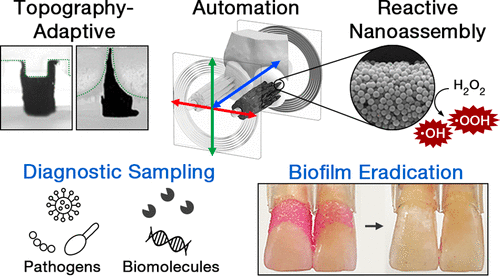The University of Pennsylvania's multidisciplinary team created the technology, which is all geared to provide a brand-new, automated method for carrying out the basic but significant everyday duties of brushing and flossing.

This system may be especially helpful for those who lack the manual dexterity to effectively clean their teeth themselves
These microrobots are composed of iron oxide nanoparticles with catalytic and magnetic properties. Researchers were able to control their movement and arrangement using a magnetic field to either produce bristle-like structures that remove dental plaque from the wide surfaces of teeth or elongated threads that can slide between teeth like a piece of floss. In both situations, the nanoparticles are propelled by a catalytic process to release antimicrobials that eliminate hazardous oral germs right away.
The robotic assembly may adjust to a range of geometries to almost eradicate the sticky biofilms that cause cavities and gum disease, according to tests employing this technique on the dummy and actual human teeth. The Penn team published their findings in establishing a robotic system's proof-of-concept in the journal ACS Nano.
"Routine oral care is cumbersome and can pose challenges for many people, especially those who have a hard time cleaning their teeth," says Hyun (Michel) Koo, a professor in the Department of Orthodontics and divisions of Community Oral Health and Pediatric Dentistry in Penn's School of Dental Medicine and co-corresponding author on the study. "You have to brush your teeth, then floss your teeth, then rinse your mouth; it's a manual, multi-step process. The big innovation here is that the robotics system can do all three in a single, hands-free, automated way."
The system is configured to adjust itself to diverse surfaces, whether it be perfectly straight or with severe malocclusion. It is specifically designed to be able to reach every single crevice in the oral cavity.
"Nanoparticles can be shaped and controlled with magnetic fields in surprising ways," says Edward Steager, a senior research investigator in Penn's School of Engineering and Applied Science and co-corresponding author. "We form bristles that can extend, sweep, and even transfer back and forth across a space, much like flossing. The way it works is similar to how a robotic arm might reach out and clean a surface. The system can be programmed to do the nanoparticle assembly and motion control automatically."
This technology will particularly be helpful to geriatric patients and those with physical or mental disabilities to achieve optimum oral health care without assistance.




















Comments